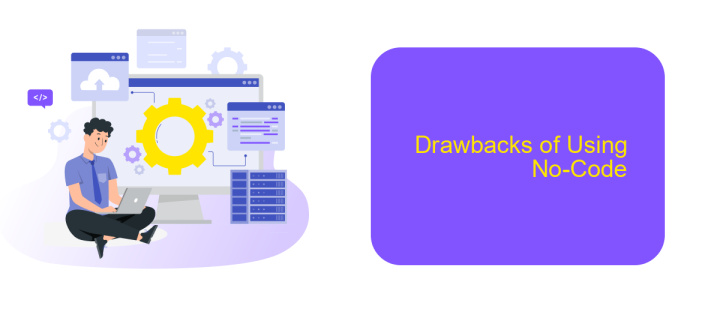No-Code Job
In today's rapidly evolving tech landscape, no-code platforms are revolutionizing the way we approach job creation and automation. By empowering individuals without traditional programming skills to build applications and automate workflows, no-code tools are democratizing technology. This article explores the rise of no-code jobs, the opportunities they present, and how they are reshaping the future of work.
Introduction
The rise of no-code platforms has revolutionized the way businesses and individuals approach software development. These tools empower users to create applications and automate workflows without needing extensive programming knowledge. This democratization of technology opens up new opportunities for innovation and efficiency, making it accessible to a broader audience.
- Streamlined development processes
- Cost-effective solutions
- Increased accessibility for non-developers
- Rapid prototyping and deployment
One of the most significant advantages of no-code platforms is their ability to integrate various services seamlessly. Tools like ApiX-Drive enable users to connect different applications and automate data transfers effortlessly. This not only saves time but also ensures that all systems work harmoniously together, enhancing overall productivity. As the no-code movement continues to grow, it is reshaping the job market and creating new roles that focus on leveraging these innovative tools.
What is No-Code?

No-Code is a revolutionary approach to software development that allows individuals to create applications, websites, and automated workflows without writing a single line of code. This paradigm shift democratizes technology, enabling non-technical users to build and deploy digital solutions using visual interfaces and pre-built templates. With drag-and-drop functionality, users can design complex systems quickly and efficiently, bypassing the need for traditional programming skills.
One of the key benefits of No-Code platforms is their ability to integrate various services and tools seamlessly. For instance, ApiX-Drive is a powerful service that facilitates the connection of different applications and automates workflows, enhancing productivity and reducing manual effort. By leveraging such integrations, users can streamline their operations, ensuring that data flows smoothly between disparate systems. This not only saves time but also minimizes the risk of errors, making No-Code solutions an attractive option for businesses of all sizes.
Benefits of Using No-Code

No-code platforms offer a range of benefits that make them appealing to businesses and individuals alike. They enable users to build and deploy applications without needing extensive programming knowledge, which significantly lowers the barrier to entry for tech innovation.
- Speed: No-code tools allow for rapid development and deployment, reducing the time it takes to bring a product to market.
- Cost-Effective: Since no-code platforms eliminate the need for specialized developers, they can drastically cut down on labor costs.
- Flexibility: Users can easily modify and update applications as requirements change, ensuring that solutions remain relevant and effective.
- Accessibility: These platforms democratize app development, making it accessible to non-technical users and encouraging a culture of innovation.
- Integration: Services like ApiX-Drive facilitate seamless integration with various third-party applications, enhancing the functionality of no-code solutions.
By leveraging no-code platforms, businesses can innovate faster, reduce costs, and empower a broader range of employees to contribute to the development process. This approach not only accelerates digital transformation but also fosters a more inclusive and agile working environment.
Drawbacks of Using No-Code

While no-code platforms offer numerous benefits, they are not without their drawbacks. One significant limitation is the lack of customization. These platforms often provide pre-built templates and limited options for modification, which can be restrictive for businesses with unique needs.
Another challenge is scalability. No-code solutions may struggle to handle increased data loads and complex workflows as a business grows. This can lead to performance issues and the need for a more robust, custom-built solution in the long run.
- Limited customization options
- Scalability issues
- Dependency on third-party services
- Potential security vulnerabilities
Additionally, relying on no-code platforms often means depending on third-party services for integrations and automations. For example, ApiX-Drive can help streamline these integrations, but it also introduces another layer of dependency and potential security risks. Therefore, while no-code tools can be a quick and cost-effective solution, they may not be suitable for all business scenarios.
Conclusion
The rise of No-Code platforms has revolutionized the job market, enabling individuals without traditional programming skills to create sophisticated applications and workflows. This democratization of technology has opened up new career opportunities and empowered a broader range of professionals to contribute to digital transformation initiatives within their organizations.
Furthermore, the integration of No-Code tools with services like ApiX-Drive has streamlined the process of connecting various applications and automating workflows. By simplifying these integrations, No-Code platforms not only enhance productivity but also reduce the reliance on specialized IT teams. As the No-Code movement continues to gain momentum, it is poised to reshape the future of work, fostering innovation and inclusivity in the tech industry.
FAQ
What is a No-Code Job?
What skills are needed for a No-Code Job?
Can I automate workflows without coding knowledge?
What are some common tasks in a No-Code Job?
How do I get started with a No-Code Job?
Routine tasks take a lot of time from employees? Do they burn out, do not have enough working day for the main duties and important things? Do you understand that the only way out of this situation in modern realities is automation? Try Apix-Drive for free and make sure that the online connector in 5 minutes of setting up integration will remove a significant part of the routine from your life and free up time for you and your employees.

